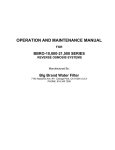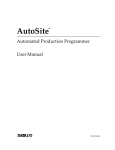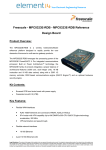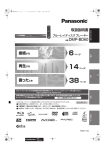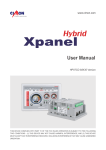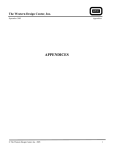Download Generic MPF MPC8313 ECC BBT User Manual
Transcript
Generic Multiple Partition with MPC8313 ECC and BBT Bad Block Scheme This scheme is a Generic Multiple Partition format. It uses skip method for bad blocks handling within each partition. Bad blocks within any partition do not affect the starting location of the follow up partitions. To preserve the original NAND’s manufacturer bad block markers, a bad block table is created and two copies are saved within the last two (good) device blocks. Relevant User Options The following special features on the special features tab apply to this scheme. The default values might work in some cases but please make sure to set the right value according to your system. Please note only the below special feature items are related to this scheme and ignore any others. If any of below items doesn’t exist, please check whether the right version has been installed or contact Data I/O for support by submitting Device Support Request through this address: http://www.dataio.com/support/dsr.asp Bad Block Handling Type = “Generic MPF MPC8313 ECC BBT” Spare Area = “ECC” This option should be selected for this BBM. ECC Extended Type= “MPC8313” This scheme adds 9 bytes of iMX35 ECC (RS-ECC) values per 512 bytes of data to the spare area during programming. BBT Enabled = “Yes” This will add two bad block tables (Bbt0/1tbB) in the device’s last two good blocks. Partition Table File = “YourPartition.mbn”. All other features are not used for this scheme. User Checksum Implications In this scheme, the TaskLink checksum will be different from the device checksum because of the bad block table that contains possible bad blocks list. Image Preparation The image data file should combine the binary data from the different partitions and “FF” is to be padded into the unused areas. The created image file should not contain any spare (OOB) area data. Bad Block Table Format There are two copies of the Bad Block tables created and saved per device. These tables consist of a header followed by a table of two bits per device block. The headers are saved at offset 0x200 of each of the last two blocks. The first table has a signature of “Bbt0…” at the last device good block. The second table has a signature of “1tbB…” at n-1)th device good block. There are two bits used per device block and the value of “11” indicates a good block within the table. These bad block table pages will have ECC added at run time. As examples of bad block entries in the tables – 1. Block # 18 is bad: The value of “00” is saved as bits # 2 & 3 of byte # 4 in the bad block table address 0x4. 2. Block # 1 (counting from 0) is bad: “00” is saved as bits 2 & 3 of byte # 0 in the bad block table address 0x0. Partition Table Format Partition.mbn: a. A binary file of YourFile.MBN with fixed length of 256 bytes. b. Organization: 16 rows x 4 columns. Each table item is 32-bits, little endian byte ordering. c. Each row of the table describes configuration for one partition. Up to 16 partitions can be used. d. Partition configuration: i. Start Adr: address of start of partition in flash blocks. The programmer will set the file read pointer and the programmer write pointer to Start Adr. If Start Adr=0xFFFFFFFF, skip to the next partition. ii. End Adr: last valid block in the current partition. The last data block programmed must be equal to or less than End Adr, otherwise the programmer will reject the flash device. iii. Actual Data Length: number of blocks of data to read from the input file and write to the flash in the current partition. Note - The last partition should be allocated for the Bbt tables with the following settings: It should start with device’s block count -4, for example 4096-4. It should end with device’s block count -1, like 4096-1. There should be a minimum size of 4 blocks (two tables and two as spares.) This Document’s versionsV1.0: 11/5/2013 Original version V1.1: 2/17/2014 Corrected the starting address for the Bbt partition to “block count -4” Changed the signature for the bad block table from “Bbt1” to “Bbt0”.


